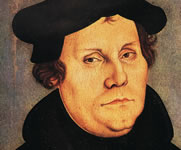Different Styles & Periods
- In the beginning was the castle
- A declaration of love to antiquity
- From Renaissance to Romanticism
- Baroque centre of culture and enlightenment
- Baroque magnificence
- Baroque gardens in the north
- Palatine baroque and Francophile elegance
- Late-baroque treasure troves
- Baroque to Biedermeier in Berlin and Brandenburg
- The Golden Age of Classicism
- Jewels of historicism
- Neo-Gothic romanticism
Contact
In the beginning was the castle
The Middle Ages, the time of knights and chivalry, was the heyday of castle building: thousands of fortresses were constructed all over Germany, with the turreted walls and towers that make them seem so romantic to us today. These bastions of Gothic and Romanesque architecture are treasure troves of sagas, legends and fairytales but also reminders of the grim power battles in which their owners once engaged.
Burghausen Castle

Show on map »
Kaiserburg Castle, Nuremberg
Show on map »
Königstein Fortress
Show on map »
Coburg Fortress
One of Germany's best-preserved castles, known as the "Franconian Crown", Coburg Fortress towers high above the border between Upper Franconia and Thuringia. A frequent visitor to the castle in the 16th century was Lucas Cranach the Elder who came here to gather ideas and produce sketches. His works in the Museum of Prints and Drawings, along with those of the great Albrecht Dürer, are not to be missed.
Show on map »
Show on map »
Hornberg Castle
Probably the most famous German insult comes from Goethe's play, "Götz von Berlichingen". The historical model for this rambunctious knight lived at Hornberg Castle in North Baden in the 16th century where – unlike his literary counterpart – he died at 82, a rare age for those times.
Show on map »
Show on map »
Travel Planner
Select an option...
Location
- Burghausen Castle
- Kaiserburg Castle, Nuremberg
- Königstein Fortress
- Coburg Fortress
- Hornberg Castle






